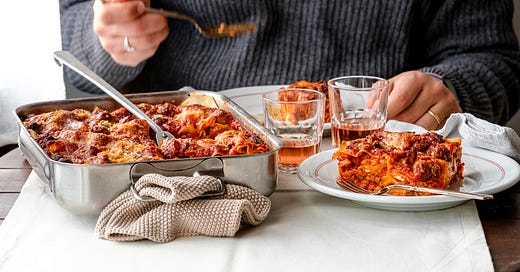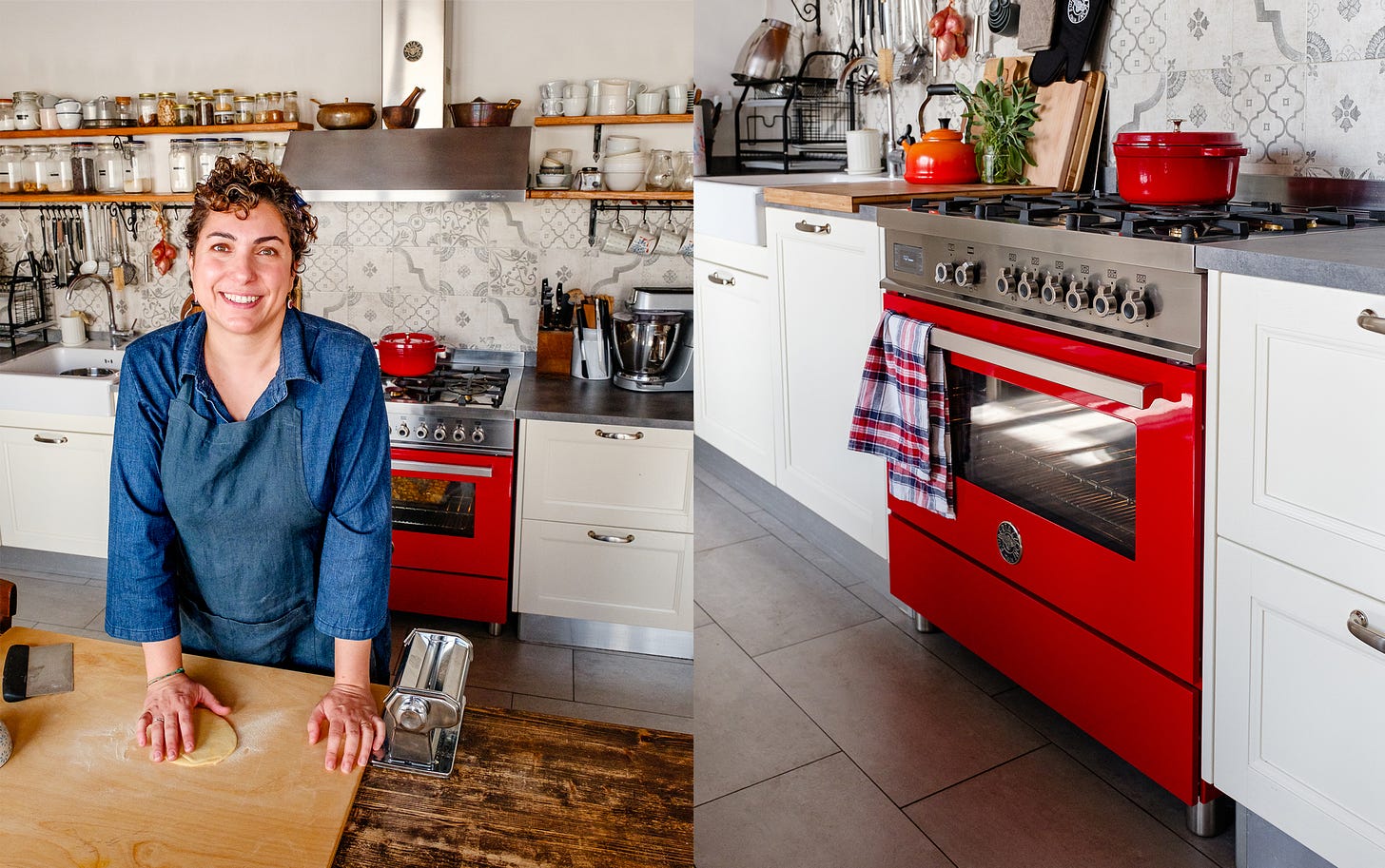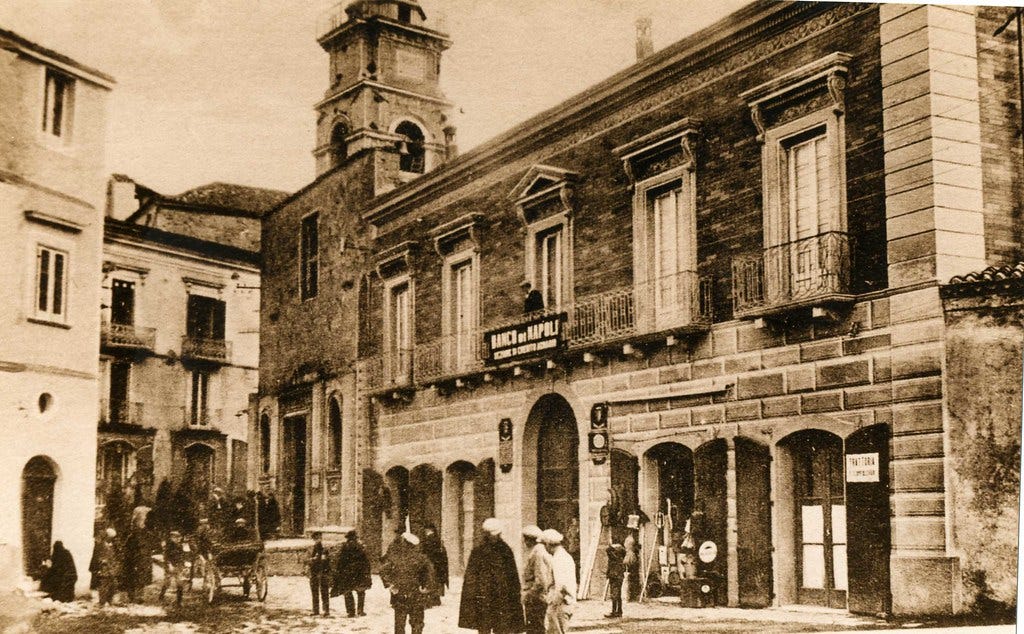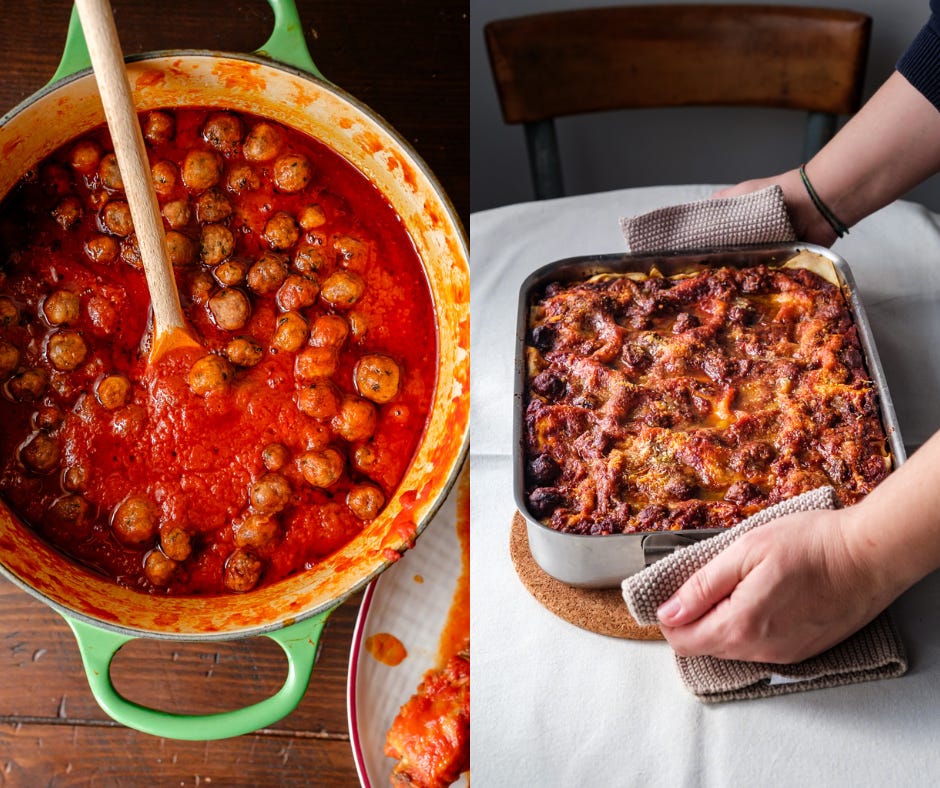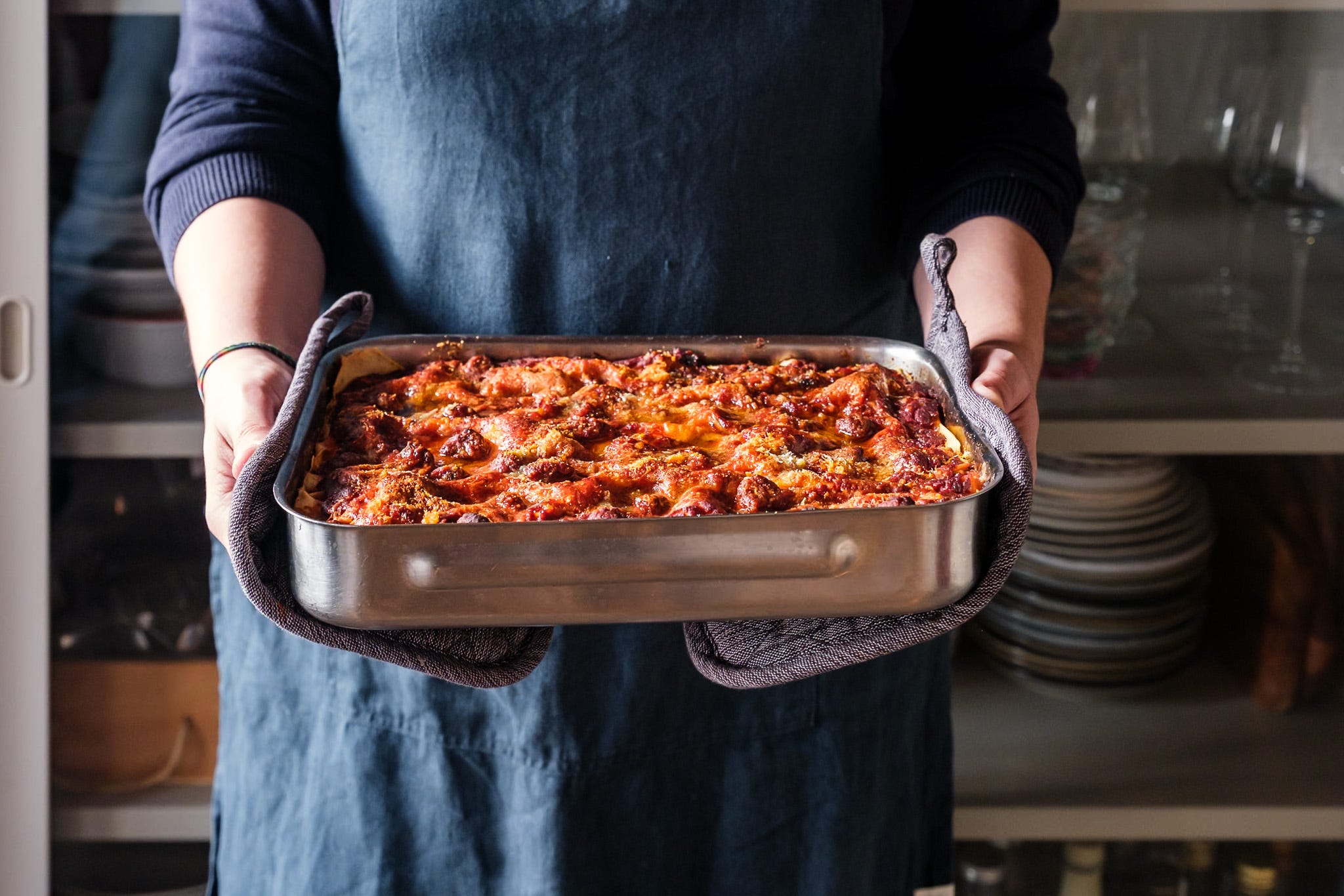Sagne a lu' fuorn' - My family Southern lasagne for your Christmas holidays
Not for the faint of heart, with a Neapolitan meat sauce and tiny meatballs, hard-boiled eggs, sausages, mozzarella and scamorza.
Good morning everyone. I come to your inbox in one of the busiest weeks of the year, a jumble of festive atmosphere, twinkling lights, races against time, late hours spent in the kitchen simmering a pot of meat sauce for Christmas, strategic planning and secret Santa stories told in a hushed voice to a three-year-old girl who for the first time breaths the magic of the holidays.
I come with a Christmas gift, a festive family recipe for your cooking repertoire, free for all, wrapped with care and tradition, the lingering aroma of a slow simmered meat sauce still entangled in the velvet ribbon.
Whenever I start writing a new letter for you, choosing the perfect soundtrack to match my mood and that of the story I want to tell, I feel a heartwarming sense of intimacy and family. So, Merry Christmas to you, my beloved Italian food lover extended family!
Last month I shared the photos of our renovated studio with a brand new red Bertazzoni range. It has been a cornerstone of our cooking studio for seven years. It has been part of the family and a witnessed joyful moments, laughter, struggles, and gatherings with family and friends. Now we got an updated, flaming red range, and I could not wait to put it to the test with a beloved family recipe.
I asked you what you would have been eager to cook or bake with such a kitchen setup—six burners and an extra large oven. Maybe a complex dish that's been on your "to-try" list, or maybe a family recipe that demands time and many, many pots.
I knew immediately what I wanted to cook: the festive Southern lasagna from Basilicata, a family recipe that requires many steps, pots, and hands, something I couldn’t wait to share with you.
For my family's Southern lasagne, I used my Bertazzoni to simmer for hours a Neapolitan style ragù, fry a large batch of tiny meatballs, and bake the richest lasagna you will ever encounter.
When I make this lasagne, I am never alone.
I can see nonna Marcella and my aunt Teresa sitting in a corner of the room, bent over a bowl of ground beef flavoured with parsley, garlic and sharp, grated cheese, shaping hazelnut-sized meatballs, rhythmically dipping their hands in warm water to prevent the meat from sticking.
I hear the chats and laughter of a large, Southern family, a different dialect I cannot speak, except for the names of recipes that make my heart and stomach sing: sàgn’ a lu’ fuòrn’, cauzuncìdd, ciàmbott’.
As in a dream, the table extends and stretches to welcome members of the family who are not here with us anymore, each of them with their unique feature: Nonno Biagio, always dressed in a grey suit and a tie, even at the beach, Maria, jovial and a great home cook, whose Artusi’s cookbook is now in my bookshelves along with other four copies of this cornerstone of the Italian cuisine, Zia Valeria, tiny and witty, who fed with familiar flavours a family of five kids in a new to them region.
In the early decades of the twentieth century, my family had a small restaurant—Trattoria Giardino—in Melfi, Basilicata.
The owner was Felice Scarpaleggia, the grandfather—and namesake—of my father. It was in the market square, just below the Bank of Naples, and often in my uncles’ stories, you can find traces of memories of those times. The only tangible sign that remains today is a precious—for us—set of plates that still bear designed the logo of the restaurant. The plates are now carefully kept at my parents’ house in the display case with my great-grandparents’ Chinese cups.
You can see those plates in the photos today!
Want to know more about our Southern roots?
You can start reading this archive post:
Then here you can find some recipes from Basilicata.
Onion Strudel. My aunt makes a focaccia with these onions, but I like to make a strudel with this sweet, sticky filling.
Plus, if you've bought Cucina Povera or are planning to order it, here are some of the recipes with a southern flavour from Basilicata: bread-and-anchovy-stuffed sweet green peppers (p. 48), summer vegetable stew (p. 54), baked salted cod with potatoes (p. 137).
So, what makes a Southern lasagna different from a classic lasagna?
Known as sagn ‘a lu fuorn, this superbly rich Southern pasta bake features layers of eggless semolina pasta sheets, mozzarella, scamorza, hard-boiled eggs, grated Pecorino, and a spicy lucanica sausage. The most striking characteristic, though, is the ingredient that binds everything together: a punchy Neapolitan style ragù dotted with tiny, spongy meatballs, the size of a hazelnut.
The meatballs
Grandma would make them on special occasions. Grandma Marcella, who was born and bred in Tuscany and with Etruscan roots—according to her beliefs—learnt this recipe from Aunt Valeria, her sister-in-law, a very good home cook from Basilicata. The meatballs in this case are tiny, as big as hazelnuts. Grandma would often go to Siena to help Aunt Valeria in the kitchen: she had five children who soon began to show up at home on Sundays with boyfriends and girlfriends.
The table doubled, the chairs grew in number and the amount of meatballs in the tomato sauce gradually increased. The meatballs, even according to their Southern traditions, had to be small, so that everyone could get some. They would wet their hands and start rolling these tiny meatballs with quick and expert gestures. They would spend the morning chatting over the ground meat, while in the meantime the tomato sauce simmered away on the stove with a beef braciola in it, to gain an even deeper flavour.
On special occasions, the tomato sauce with meatballs would be layered between pasta sheets to make sagn ‘a lu fuorn. On a normal Sunday, though, they would just toss it into a bowl of short pasta, like penne or fusilli, and this would be enough to turn a family gathering into a feast.

